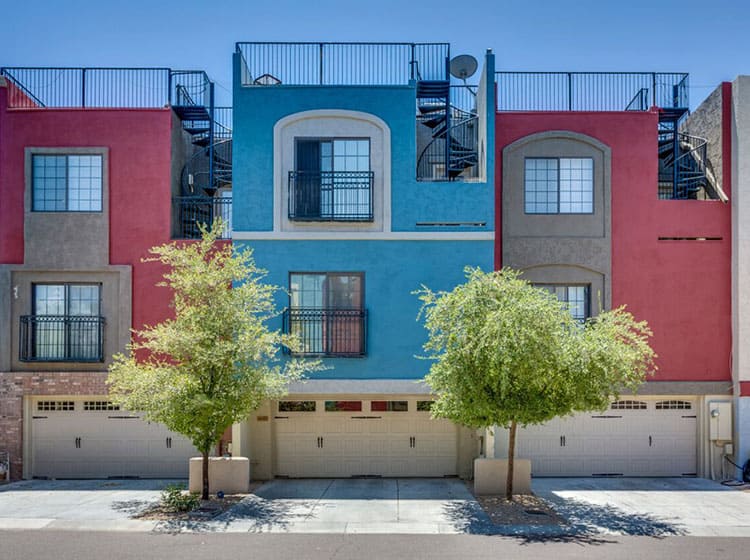Understanding The Distinctions Between Exterior And Interior Paint: Secret Attributes And Makes Use Of
Understanding The Distinctions Between Exterior And Interior Paint: Secret Attributes And Makes Use Of
Blog Article
Created By-Fitzpatrick Wilkerson
When you're selecting between exterior and interior paint, it's essential to comprehend their fundamental differences that influence both performance and looks. Interior paints are crafted for reduced VOC levels and smoother coatings, making them suitable for interior areas, while exterior paints are developed to endure extreme climate condition and UV direct exposure. Each type offers a distinct purpose, yet recognizing when to use one over the other can greatly influence your project's outcome. So, what elements should you take into consideration when making your choice?
Composition and Formula
When choosing in between exterior and interior paint, understanding their make-up and formulation is vital. Interior paints usually contain a lower quantity of volatile organic compounds (VOCs), making them safer for interior air top quality. You'll notice they commonly have a smoother finish, which enhances their ability to stand up to spots and enables easier cleansing. They're developed to hold up against the rigors of indoor environments, consisting of differing moisture levels and temperature variations.
On the other hand, outside paints are formulated to endure harsher conditions. They usually contain higher degrees of pigments and ingredients to stand up to fading from UV rays, as well as to avoid mildew and mold and mildew growth. Their composition consists of extra binders and resins, which supply much better adhesion to surfaces revealed to the elements. This makes certain the paint can withstand rain, snow, and rising and fall temperatures without peeling off or cracking.
Efficiency and Toughness
Evaluating performance and longevity is crucial when choosing between interior and exterior paint. Interior paint is designed for surfaces that experience less damage. https://www.realhomes.com/features/is-gray-paint-going-out-of-style stands up to fading and scuffing, making it excellent for living rooms and bedrooms. Nonetheless, it might not stand up well in high-moisture areas like kitchens and bathrooms without appropriate formula.
On the other hand, outside paint encounters harsher conditions. It's crafted to hold up against UV rays, rain, and temperature fluctuations. This type of paint often contains ingredients that prevent mold and mildew and mold development, ensuring durability in different climates. When you use exterior paint, you can expect it to last several years longer than indoor paint, offered it's applied appropriately.
One more crucial difference depends on the finish choices. Inside paints commonly have a selection of surfaces for visual allure, while outside paints prioritize sturdiness over sheen. If you're looking for something that can deal with the aspects, exterior paint is your best bet.
On the other hand, if you're concentrated on interior visual appeals with less worry for severe problems, interior paint may be ideal. Eventually, your choice must straighten with the details needs of the setting.
Aesthetic Considerations
A fresh layer of paint can change a space, however visual factors to consider play a crucial duty in your choice between interior and exterior choices. When you're choosing paint, think about the mood you wish to create. Interior paint allows you to discover a wider range of colors and finishes, allowing you to reveal your individual design and boost your home's ambiance. Whether you opt for soft pastels or vibrant tones, the best interior paint can make your spaces really feel comfortable, lively, or serene.
On https://residentialpaintersnearme12109.prublogger.com/30757838/comparing-inside-vs-outside-paint-secret-distinctions-and-utilizes , exterior paint requires to line up with your home's architecture and the surrounding environment. Here, you're not just making a design statement; you're likewise thinking about visual allure. Choosing shades that harmonize with your area can increase your home's worth and visual appeal. Remember that outside paint is also based on fading and climate changes, so picking a classic color can conserve you from frequent repainting.
Inevitably, think about how each alternative fits your vision. By aligning your paint selection with your preferred visual, you can create spaces that reflect your character while preserving functionality.
Verdict
When it comes to choosing paint, understanding the essential distinctions between interior and exterior alternatives is essential. Interior paints focus on aesthetics and reduced VOCs, making them ideal for enhancing your indoor rooms. In contrast, outside paints are developed for durability and climate resistance, securing your home from the aspects. By considering your particular demands and the environment, you can with confidence select the appropriate paint to achieve the appearance and durability you prefer for your area.
